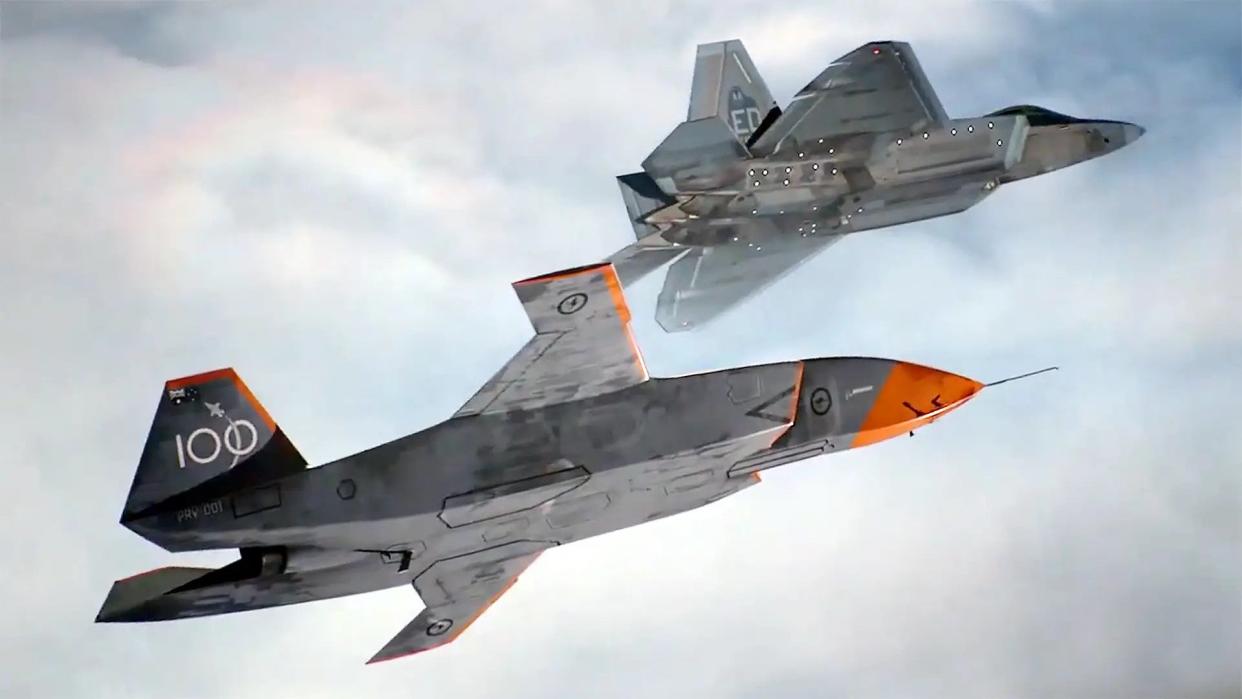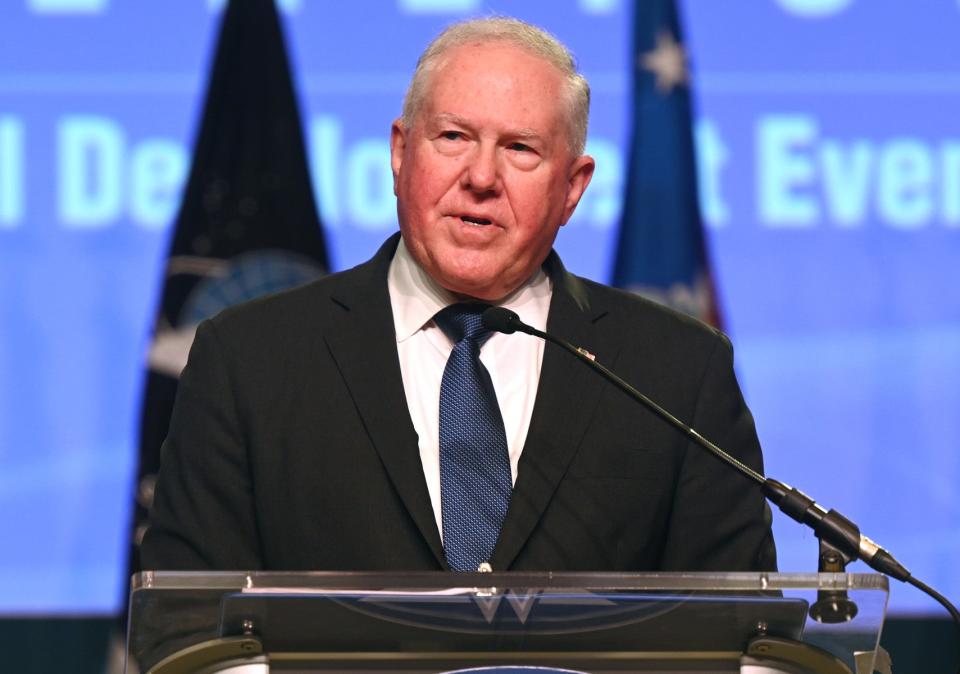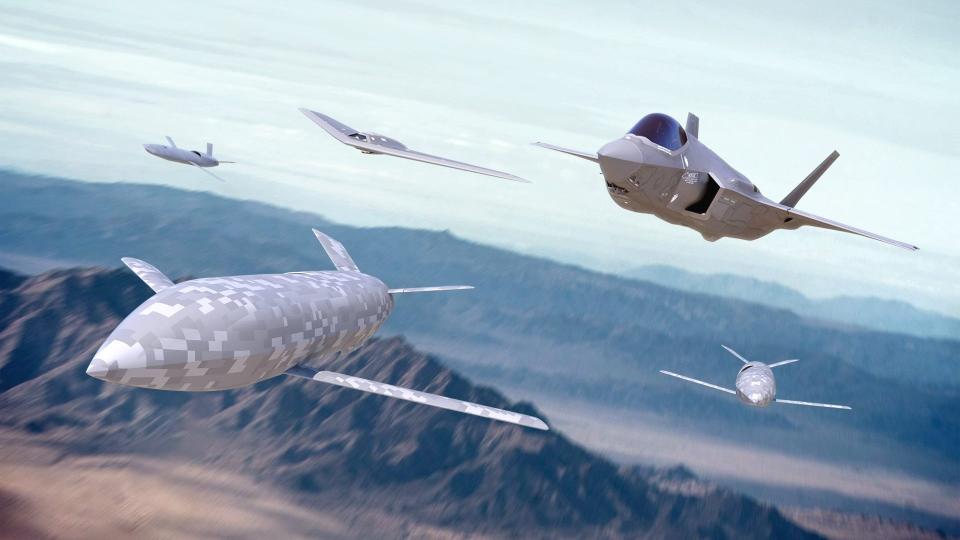CCA Loyal Wingmen Drones To Cost Quarter To Third Of An F-35

Secretary of the Air Force Frank Kendall said his service is aiming for its future Collaborative Combat Aircraft (CCA) drones that will fight alongside crewed aircraft to each cost as little as a quarter of the current price of an F-35 Joint Strike Fighter. Kendall offered this and other details about the CCA program during a public event today at the Center for a New American Security (CNAS) think tank in Washington, D.C.
The CCA effort is centered on the acquisition of at least a thousand advanced uncrewed aircraft with high degrees of autonomy designed to work closely together with crewed combat jets. The program is part of the Air Force's larger Next Generation Air Dominance (NGAD) modernization initiative that also includes the development of a new crewed sixth-generation combat jet, weapons, electronic warfare suites, sensors, battle management capabilities, engines, and other systems.

Kendall and other senior Air Force officials regularly describe these uncrewed aircraft as a critical component of how the service will conduct operations, especially in a high-end fight against an opponent like China, and achieve critical "affordable mass" in the future.
"If we go ahead buying just the NGAD platform and F-35s ... and B-21s as ... our combat aircraft, you can't afford the Air Force. Those systems are all [in the] 100 million dollar plus category, in some cases, way beyond that," Kendall said today. "So, we've got to have something that will allow us to have massive, affordable prices. So, CCA is designed to do that."

The other main takeaways regarding the CCA effort from Kendall's chat with Stacie Pettyjohn, Senior Fellow and Director of CNAS' Defense Program, and the subsequent question and answer session are as follows:
The rough expected cost of a single CCA will be "on the order of a quarter or a third" of the current unit cost of an F-35 Joint Strike Fighter.
That being said, the Air Force is still in the "early stages" of establishing key definitions regarding what it wants from its CCAs and working out the "right balance" in terms of requirements.
"We need something that has range and payload characteristics consistent with our operational concept." This concept demands drones that can "either fly ahead of or accompany crewed fighters" and that have useful "range and payload capabilities" in line with that core requirement.
Each CCA would not have "the full complement of systems that are on a fighter."
Some would carry weapons, some would carry other systems. "One of the things you can do with the CCA concept is select which systems ... to carry, which sets of capabilities, you have a modular design." This also means an enemy has to treat each one as armed, because it can be, whether it is or not.
Highly prepared and long runway independence is also a potential goal, as we have highlighted before, with Kendall stating, "Being able to get away from the use of relatively long runways is a nice feature for us. It makes the aircraft much more survivable."
Industry has already provided "different competing concepts" for what a CCA might look like.
The goal is to have started production of a "first increment" of CCAs within the next five years. The aim is to "field it [CCAs] as quickly as we can in reasonable quantities."
"They're not expendables. They're intended to be systems that you can accept losses of a fraction of them and not have a big operational impact." This also means they need to be able to be "produced relatively quickly."
"We're not going to take the length of time [with CCA] it takes to get a new, sophisticated crewed fighter."
The main planning figure for the size of the future CCA fleet is still 1,000 drones, but "I think it will very likely be more than that."
A key reason behind disclosing the 1,000-drone figure was to send a clear signal to industry that the Air Force is seriously invested in the CCA program. "We want you [industry] to invest in the technology and think about how you're going to make a very efficiently produced product for us."
CCA also represents one of the "hedging investments" the Air Force is looking to make now to help provide sufficient operational capacity to prevail in any future high-end conflict against China, and do so cost-effectively.
CCA continues to benefit from other adjacent projects, including autonomy developments using a force of modified, pilot-optional F-16s and other testing utilizing Boeing MQ-28 Ghost Bat drones. "We're using some of the Ghost Bats, the MQ-28s, as experimental aircraft to get some operational experience teaming them with crewed aircraft."
The Air Force views CCA as complementary to the Pentagon's Replicator initiative that was announced earlier this year.
Kendall's comments here about the projected costs and production goals for the CCA program, as well as how the Air Force hopes to maximize what it can get capability-wise within those constraints are notable. While the CCA drones still look set to be significantly cheaper than fifth or sixth-generation combat jets, what is being laid out here is not necessarily inexpensive even by U.S. military budget standards.
How the unit costs of the three existing variants of the F-35 are calculated has long been a subject of debate. For instance, as of January, Lockheed Martin pegged the price of the A variant the Air Force flies at $69.9 million, according to Air & Space Forces Magazine, but that figure doesn't include the Pratt & Whitney F135 engine. The U.S. military's F-35 Joint Program Office told Defense One recently that the average unit price for examples of all three variants, including the engines, in the latest production lots is around $82.5 million.
A quarter of that would be just under $20.6 million. The bill for buying 1,000 CCAs with that unit cost would therefore be close to $20.6 billion. As Kendall noted, this is still much cheaper than purchasing substantial numbers of crewed jets at close to $100 million apiece, or substantially more. The Secretary of the Air Force has previously said that each NGAD jet, of which the service plans to buy 200, would cost "multiple hundreds of millions of dollars."

In terms of CCA requirements, Kendall's specific mention of wanting to get away from larger runways is interesting, but not surprising. The Air Force has made no secret of its concerns about the growing vulnerability of large, established bases and the need for more distributed operations, as well as new camouflage, concealment, and deception capabilities and tactics, as being essential for reducing those risks going forward. The War Zone has highlighted in the past how complete runway independence, or short takeoff and landing performance close to it, could be very valuable for the future CCAs to have in this context, and how it could also allow for additional operational flexibility.
It's also worth pointing out that Kendall said that multiple MQ-28s are being used to support Air Force test efforts tied to the CCA program. It emerged in 2022 that the service had acquired at least one of these drones, which was originally developed for the Royal Australian Air Force (RAAF), but further details about that effort have been limited since then. A video the Air Force Research Laboratory (AFRL) released earlier this year, seen below, heavily featured MQ-28s, including slickly edited clips depicting them flying alongside Air Force F-22 Raptor stealth fighters and other crewed aircraft.
https://www.youtube.com/watch?v=_xuVfA6bN3c
Though much about the CCA effort, as well as the larger NGAD program, is highly classified, Kendall's comments today also underscore how more and more details are still trickling out. This trend is likely to continue as the Air Force gets closer to kicking off its formal competition for the "first increment" of these drones, which is expected to come sometime in the current Fiscal Year.
Contact the author: joe@thedrive.com

